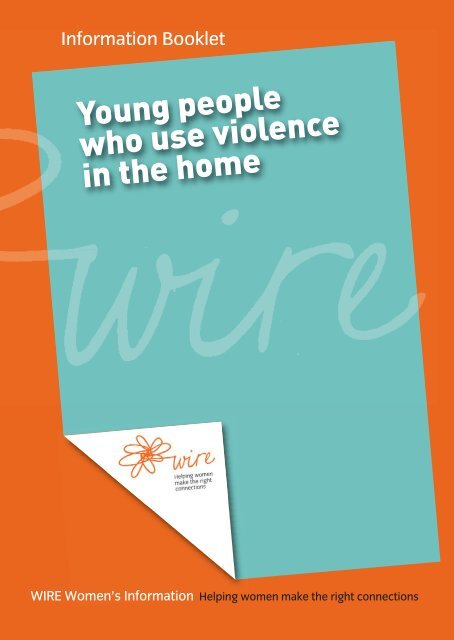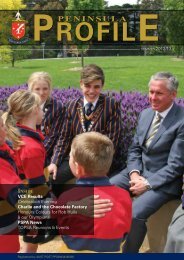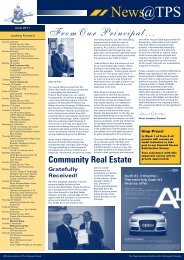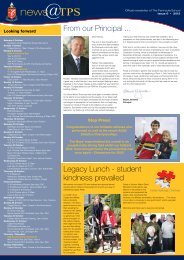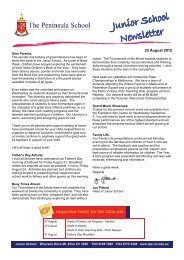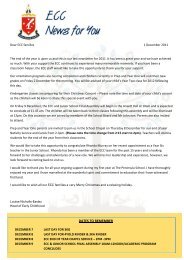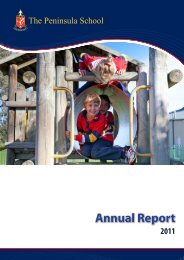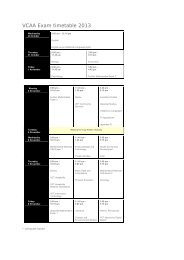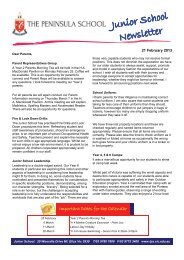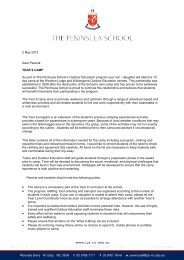Young people who use violence in the home - WIRE Women's ...
Young people who use violence in the home - WIRE Women's ...
Young people who use violence in the home - WIRE Women's ...
Create successful ePaper yourself
Turn your PDF publications into a flip-book with our unique Google optimized e-Paper software.
Information Booklet<br />
<strong>Young</strong> <strong>people</strong><br />
<strong>who</strong> <strong>use</strong> <strong>violence</strong><br />
<strong>in</strong> <strong>the</strong> <strong>home</strong><br />
<strong>WIRE</strong> Women’s Information Help<strong>in</strong>g women make <strong>the</strong> right connections
As a mo<strong>the</strong>r, carer or relative, you may f<strong>in</strong>d that your<br />
child is us<strong>in</strong>g <strong>violence</strong> or ab<strong>use</strong> to <strong>in</strong>timidate and control<br />
you and perhaps o<strong>the</strong>r family members as well. It has<br />
gone beyond ‘act<strong>in</strong>g out’ and you feel someth<strong>in</strong>g’s<br />
not right.<br />
You may f<strong>in</strong>d it difficult to accept that what your child is do<strong>in</strong>g is<br />
abusive. Perhaps you feel like it’s your fault that your child has ‘turned<br />
out’ this way. Feel<strong>in</strong>g stressed, guilty and ashamed, you may just try<br />
and put up with it.<br />
You are not responsible for <strong>the</strong> abusive behaviour, but you are very<br />
important to <strong>the</strong> solution. By accept<strong>in</strong>g <strong>the</strong> seriousness of <strong>the</strong><br />
situation and seek<strong>in</strong>g support, you may f<strong>in</strong>d <strong>the</strong> confidence and skills<br />
you need to rega<strong>in</strong> control and heal your relationship with your child.<br />
You and your family are entitled to be respected and to live <strong>in</strong> safety.
Information Booklet<br />
<strong>Young</strong> <strong>people</strong> <strong>who</strong> <strong>use</strong> <strong>violence</strong> <strong>in</strong> <strong>the</strong> <strong>home</strong><br />
1<br />
Ab<strong>use</strong> is any act that creates fear and is<br />
<strong>in</strong>tended to ca<strong>use</strong> physical, emotional,<br />
psychological, f<strong>in</strong>ancial or property damage<br />
to ga<strong>in</strong> power and control over ano<strong>the</strong>r.<br />
What is ab<strong>use</strong>?<br />
Adolescence is <strong>the</strong> stage <strong>in</strong> between childhood and adulthood—our bra<strong>in</strong>s<br />
keep develop<strong>in</strong>g right up to <strong>the</strong> age of about 25. Dur<strong>in</strong>g this time it is normal<br />
for young <strong>people</strong> to challenge authority and rules as <strong>the</strong>y prepare to become<br />
<strong>in</strong>dependent and to run <strong>the</strong>ir own lives. So how do you know what is<br />
healthy anger and conflict and what is abusive behaviour? You know when<br />
someth<strong>in</strong>g’s not right—listen to your own thoughts and feel<strong>in</strong>gs.<br />
Examples of abusive behaviour:<br />
Most abusive young <strong>people</strong> <strong>use</strong> a comb<strong>in</strong>ation of verbal and emotional<br />
ab<strong>use</strong>, threats and property damage, as well as physical <strong>violence</strong>. This<br />
behaviour generally gets worse as <strong>the</strong> young person grows bigger and<br />
stronger.<br />
Physical:<br />
• Hitt<strong>in</strong>g, punch<strong>in</strong>g, shov<strong>in</strong>g, kick<strong>in</strong>g, spitt<strong>in</strong>g, throw<strong>in</strong>g th<strong>in</strong>gs<br />
• Break<strong>in</strong>g th<strong>in</strong>gs, punch<strong>in</strong>g holes <strong>in</strong> walls<br />
• Abusive and bully<strong>in</strong>g behaviour to sibl<strong>in</strong>gs<br />
• Cruelty to pets<br />
Emotional:<br />
• Verbal ab<strong>use</strong>, swear<strong>in</strong>g, yell<strong>in</strong>g, put-downs<br />
• Play<strong>in</strong>g m<strong>in</strong>d games—try<strong>in</strong>g to make you th<strong>in</strong>k you’re crazy<br />
• Mak<strong>in</strong>g threats to run away, call child protection, hurt or kill <strong>the</strong>mselves<br />
<strong>in</strong> order to control you or get <strong>the</strong>ir own way<br />
F<strong>in</strong>ancial:<br />
• Demand<strong>in</strong>g money or purchases you can’t afford<br />
• Steal<strong>in</strong>g money or possessions<br />
• Incurr<strong>in</strong>g debts you have to pay<br />
Sexual:<br />
• View<strong>in</strong>g or mak<strong>in</strong>g <strong>in</strong>ternet pornography<br />
• Engag<strong>in</strong>g sibl<strong>in</strong>gs <strong>in</strong> sexual behaviour<br />
• Excessive or public masturbation
Information Booklet<br />
<strong>Young</strong> <strong>people</strong> <strong>who</strong> <strong>use</strong> <strong>violence</strong> <strong>in</strong> <strong>the</strong> <strong>home</strong><br />
2<br />
Is it my fault?<br />
Mo<strong>the</strong>rs often blame <strong>the</strong>mselves for <strong>the</strong>ir children’s behaviour.<br />
They may even feel <strong>the</strong>ir children are punish<strong>in</strong>g <strong>the</strong>m for be<strong>in</strong>g<br />
a bad mo<strong>the</strong>r. This can leave mo<strong>the</strong>rs feel<strong>in</strong>g like failures, and<br />
feel<strong>in</strong>g <strong>the</strong>y can't manage <strong>the</strong> situation. This is not helpful.<br />
<strong>Young</strong> <strong>people</strong> may behave violently for a variety of reasons.<br />
Whatever <strong>the</strong> reason, behav<strong>in</strong>g violently or abusively is not<br />
healthy or respectful. <strong>Young</strong> <strong>people</strong> must be responsible for <strong>the</strong>ir<br />
own behaviour and actions.<br />
Who ab<strong>use</strong>s?<br />
Many toddlers show aggression. Although most grow out of this, some<br />
slowly escalate as <strong>the</strong>y get bigger and stronger. Although <strong>violence</strong> can<br />
start at any age, it often becomes a major problem between <strong>the</strong> ages of 12<br />
and 17 years. In 2010/11, Victoria Police was called to 3252 family <strong>violence</strong><br />
<strong>in</strong>cidents where <strong>the</strong> offender was under 18; <strong>the</strong> majority of <strong>the</strong>se <strong>in</strong>cidents<br />
(2244) <strong>in</strong>volved 15–17 year olds.<br />
Of all adolescent offenders, two thirds (1895) were male and a third (932)<br />
were female. Current statistics suggest that girls are less likely to be<br />
physically abusive than boys and are more likely to <strong>use</strong> emotional ab<strong>use</strong>.<br />
Risk factors<br />
The follow<strong>in</strong>g factors may make abusive behaviour more likely, more<br />
severe or harder to control. It’s important to remember that none of <strong>the</strong>se<br />
th<strong>in</strong>gs ‘ca<strong>use</strong>’ <strong>violence</strong>.<br />
Substance mis<strong>use</strong>—<strong>Young</strong> <strong>people</strong> may be more aggressive and show less<br />
remorse when <strong>the</strong>y are us<strong>in</strong>g drugs and/or alchohol.<br />
Mental illness—Youth mental health services can support you to learn<br />
about <strong>the</strong> mental health issue and how best to both support yourself and<br />
ensure your family’s safety and wellbe<strong>in</strong>g.<br />
Trauma and loss—War, migration, death, family separation, illness and<br />
grief affects how a child develops, copes with stress or conflict, makes<br />
decisions or handles emotions. This can lead to abusive and violent<br />
behaviour.
Information Booklet<br />
<strong>Young</strong> <strong>people</strong> <strong>who</strong> <strong>use</strong> <strong>violence</strong> <strong>in</strong> <strong>the</strong> <strong>home</strong><br />
3<br />
Experienc<strong>in</strong>g family <strong>violence</strong>—<br />
Children <strong>who</strong> experience family<br />
<strong>violence</strong> may be more ‘at risk’ of us<strong>in</strong>g<br />
<strong>violence</strong> <strong>the</strong>mselves, particularly if <strong>the</strong>y<br />
are male children. They may beg<strong>in</strong> to see<br />
<strong>violence</strong> as a normal and acceptable way of<br />
MYTH: “They’re just lett<strong>in</strong>g<br />
off steam, <strong>the</strong>y can’t help it”<br />
REALITY: Abusive young <strong>people</strong><br />
can control <strong>the</strong>ir behaviour.<br />
They choose to <strong>use</strong> violent or<br />
abusive behaviour to control and<br />
disempower you.<br />
communicat<strong>in</strong>g or resolv<strong>in</strong>g conflict. Like adults, <strong>the</strong>y <strong>use</strong> <strong>violence</strong> to ga<strong>in</strong><br />
a temporary sense of control and power <strong>in</strong> an out-of-control situation<br />
where <strong>the</strong>y feel powerless and worthless.<br />
Men’s <strong>violence</strong> toward women teaches children to be disrespectful to <strong>the</strong>ir<br />
mo<strong>the</strong>r and underm<strong>in</strong>es her authority. Children <strong>who</strong> grow up with <strong>the</strong>se<br />
abusive attitudes unchallenged are more likely to ab<strong>use</strong> and <strong>use</strong> <strong>violence</strong><br />
aga<strong>in</strong>st <strong>the</strong>ir mo<strong>the</strong>r.<br />
Sexist attitudes—Common attitudes <strong>in</strong> our society allow males, <strong>in</strong>clud<strong>in</strong>g<br />
young men, to feel <strong>the</strong>y are entitled to control women and <strong>the</strong> ho<strong>use</strong>hold.<br />
Physical strength and dom<strong>in</strong>ance are seen as def<strong>in</strong><strong>in</strong>g qualities of be<strong>in</strong>g a<br />
man. Such attitudes and peer pressure can encourage macho behaviour<br />
<strong>in</strong> boys.<br />
Attitude of over-entitlement—Parents sometimes put <strong>the</strong>ir energy <strong>in</strong>to<br />
giv<strong>in</strong>g <strong>the</strong>ir children whatever <strong>the</strong>y want at <strong>the</strong> expense of <strong>in</strong>still<strong>in</strong>g <strong>the</strong>m<br />
with a sense of responsibility. Some children see it as <strong>the</strong>ir parents’ job to<br />
make <strong>the</strong>m happy–at any cost!<br />
Temperament—Sometimes <strong>the</strong>re is just one ‘difficult’ child <strong>in</strong> a family <strong>who</strong><br />
has personality traits such as be<strong>in</strong>g stubborn, impulsive and combative.<br />
MYTH: “They’re also victims<br />
<strong>the</strong>mselves”<br />
REALITY: Abusive young <strong>people</strong><br />
may have suffered trauma, grief<br />
or loss—but this is an explanation,<br />
not an exc<strong>use</strong>. By help<strong>in</strong>g <strong>the</strong>m learn<br />
to handle <strong>the</strong>ir feel<strong>in</strong>gs better you will<br />
be do<strong>in</strong>g <strong>the</strong>m a big favour.
Information Booklet<br />
<strong>Young</strong> <strong>people</strong> <strong>who</strong> <strong>use</strong> <strong>violence</strong> <strong>in</strong> <strong>the</strong> <strong>home</strong><br />
4<br />
In 2007/8, 74% of parents <strong>who</strong><br />
sought an <strong>in</strong>tervention order<br />
aga<strong>in</strong>st <strong>the</strong>ir child were mo<strong>the</strong>rs.<br />
Who is ab<strong>use</strong>d?<br />
Family <strong>violence</strong> and ab<strong>use</strong> perpetrated by adolescents is a problem that<br />
cuts across all types of families from all backgrounds. However, for many<br />
reasons, mo<strong>the</strong>rs are more likely to be ab<strong>use</strong>d. In 2007/8,<br />
74% of parents <strong>who</strong> sought an <strong>in</strong>tervention order aga<strong>in</strong>st <strong>the</strong>ir child were<br />
mo<strong>the</strong>rs (Department of Justice 2009, p. 45).<br />
Women are still primarily responsible for parent<strong>in</strong>g and so mo<strong>the</strong>rs may be<br />
<strong>the</strong> ones <strong>in</strong> charge of ‘lay<strong>in</strong>g down <strong>the</strong> law’ while at <strong>the</strong> same time feel<strong>in</strong>g<br />
more protective of <strong>the</strong> children. This is particularly <strong>the</strong> case for women<br />
<strong>who</strong> have left <strong>the</strong>ir partners—sole and separated mo<strong>the</strong>rs are <strong>the</strong> most<br />
frequent victims of <strong>violence</strong> and ab<strong>use</strong> from <strong>the</strong>ir children.<br />
There is no evidence s<strong>in</strong>gle parent<strong>in</strong>g itself leads to ab<strong>use</strong> by children,<br />
unless <strong>the</strong>re has been past family <strong>violence</strong>. However, sole parents may<br />
lack support to respond to <strong>the</strong>ir children’s <strong>violence</strong>, be more isolated and<br />
f<strong>in</strong>d it harder to deal with ab<strong>use</strong> from <strong>the</strong>ir children.<br />
<strong>Young</strong> <strong>people</strong> may also ab<strong>use</strong> younger bro<strong>the</strong>rs and sisters, <strong>who</strong> may<br />
consequently suffer developmental problems, and long-term emotional<br />
and relationship difficulties where <strong>the</strong> ab<strong>use</strong> is serious. It is important that<br />
you <strong>in</strong>tervene. For more <strong>in</strong>formation visit <strong>the</strong> Sibl<strong>in</strong>gs Ab<strong>use</strong> Survivors<br />
Information and Advocacy Network website www.sasian.org<br />
If your child is be<strong>in</strong>g cruel to pets or animals, take this seriously, as it can<br />
be a sign of very serious issues. For more <strong>in</strong>formation see <strong>the</strong> Royal Society<br />
for <strong>the</strong> Prevention of Cruelty to Animals (RSPCA) Victoria website at<br />
www.rspcavic.org/services/education/children-and-animal-cruelty/<br />
Child Protection will also respond to severe cases of animal cruelty to pets<br />
or animals.<br />
MYTH: “They must be mentally<br />
ill/on drugs/traumatised...”<br />
REALITY: There is no exc<strong>use</strong> for<br />
<strong>violence</strong>. Some abusive young<br />
<strong>people</strong> may have a mental health,<br />
drug or alcohol issue, but <strong>the</strong>y can<br />
still control <strong>the</strong>ir behaviour.
Information Booklet<br />
<strong>Young</strong> <strong>people</strong> <strong>who</strong> <strong>use</strong> <strong>violence</strong> <strong>in</strong> <strong>the</strong> <strong>home</strong><br />
5<br />
Rega<strong>in</strong><strong>in</strong>g control and heal<strong>in</strong>g <strong>the</strong> relationship<br />
Ab<strong>use</strong> thrives <strong>in</strong> silence and isolation. Parental ab<strong>use</strong> is still a taboo<br />
subject, like domestic <strong>violence</strong> was twenty or thirty years ago. Although it<br />
may be difficult and embarrass<strong>in</strong>g, it is very important to let o<strong>the</strong>rs know<br />
what is happen<strong>in</strong>g.<br />
Break<strong>in</strong>g <strong>the</strong> silence by f<strong>in</strong>d<strong>in</strong>g a safe place to talk about what’s go<strong>in</strong>g on<br />
at <strong>home</strong>, whe<strong>the</strong>r it be with trusted family and friends or support services,<br />
can be <strong>the</strong> first step on your journey of rega<strong>in</strong><strong>in</strong>g control and heal<strong>in</strong>g <strong>the</strong><br />
relationship with your child.<br />
It is usually <strong>the</strong> mo<strong>the</strong>r <strong>who</strong> recognises this problem and seeks help.<br />
Ga<strong>in</strong><strong>in</strong>g <strong>the</strong> support and agreement of o<strong>the</strong>r adults <strong>in</strong> your child’s life to<br />
follow a consistent approach to discipl<strong>in</strong>e is very important. This could<br />
<strong>in</strong>clude your spo<strong>use</strong>, your ex-partner, and your child’s teachers at<br />
school—<strong>the</strong> school’s welfare officer may be a helpful contact for this.<br />
It is very common for <strong>the</strong> abusive child to blame you and ref<strong>use</strong> to take<br />
responsibility for <strong>the</strong>ir behaviour and ref<strong>use</strong> counsell<strong>in</strong>g or o<strong>the</strong>r supports.<br />
Don't be discouraged. By gett<strong>in</strong>g help for yourself and work<strong>in</strong>g on your own<br />
behaviour and responses, <strong>the</strong> situation at <strong>home</strong> can improve.<br />
Much as <strong>the</strong>y push <strong>the</strong> limits, young <strong>people</strong> need clear rules and consistent<br />
consequences to feel safe and secure. Although an abusive child may<br />
appear to enjoy <strong>the</strong>ir power, <strong>the</strong>y are usually far happier when <strong>the</strong>ir parents<br />
take control and provide guidance and leadership. By hold<strong>in</strong>g <strong>the</strong>m<br />
accountable for <strong>the</strong>ir actions you are not violat<strong>in</strong>g <strong>the</strong>ir rights—you are<br />
teach<strong>in</strong>g <strong>the</strong>m how to behave appropriately.<br />
It is extremely difficult to rema<strong>in</strong> calm and act appropriately <strong>in</strong> <strong>the</strong> heat of<br />
<strong>the</strong> moment—<strong>the</strong>y really know how to ‘push your buttons’. You might<br />
benefit from learn<strong>in</strong>g different ways of relat<strong>in</strong>g to your children and deal<strong>in</strong>g<br />
with negative emotions and conflict. Gett<strong>in</strong>g outside support will help you<br />
to reflect on your own responses.<br />
Ga<strong>the</strong>r<strong>in</strong>g <strong>in</strong>formation and gett<strong>in</strong>g support will also help you rega<strong>in</strong><br />
confidence, stay <strong>in</strong> control, follow through and negotiate what is a<br />
long-term process. There is no quick fix, but <strong>the</strong> sooner you take action,<br />
<strong>the</strong> sooner <strong>the</strong> situation will improve, and you may avoid hav<strong>in</strong>g to take<br />
more drastic actions later.
Information Booklet<br />
<strong>Young</strong> <strong>people</strong> <strong>who</strong> <strong>use</strong> <strong>violence</strong> <strong>in</strong> <strong>the</strong> <strong>home</strong><br />
6<br />
MYTH: “It is beca<strong>use</strong> his<br />
fa<strong>the</strong>r was violent”<br />
REALITY: Violence is not<br />
biologically <strong>in</strong>herited—<br />
it results from learned<br />
attitudes and behaviours.<br />
What can I do to protect myself and my o<strong>the</strong>r<br />
children?<br />
If your child is us<strong>in</strong>g physical <strong>violence</strong>, you should create a safety plan.<br />
This <strong>in</strong>volves th<strong>in</strong>k<strong>in</strong>g about what you are already do<strong>in</strong>g to protect yourself<br />
and o<strong>the</strong>rs, and what works.<br />
Sometimes you may be able to tell when a situation with your child is<br />
escalat<strong>in</strong>g towards an abusive confrontation. At o<strong>the</strong>r times young <strong>people</strong><br />
seem to just 'go off' without warn<strong>in</strong>g. There is a limit to how much you can<br />
try to reason with someone while <strong>the</strong>y are <strong>in</strong> a rage. Sometimes <strong>the</strong> only<br />
way to de-escalate such situations is simply to remove yourself and stop<br />
<strong>in</strong>teract<strong>in</strong>g altoge<strong>the</strong>r.<br />
Have a plan for how you and your o<strong>the</strong>r children will leave <strong>the</strong> ho<strong>use</strong> and<br />
where you will go. Make sure your o<strong>the</strong>r children know how important it is<br />
for <strong>the</strong>m to stick to <strong>the</strong> plan. Keep your wallet and car keys handy and <strong>in</strong><br />
<strong>the</strong> same spot.
Information Booklet<br />
<strong>Young</strong> <strong>people</strong> <strong>who</strong> <strong>use</strong> <strong>violence</strong> <strong>in</strong> <strong>the</strong> <strong>home</strong><br />
7<br />
Inform yourself about legal options<br />
It is important to learn about your legal rights and <strong>the</strong> rights of your child so<br />
that you are clear about <strong>the</strong> full range of options available to you, even if<br />
you choose not to take legal action.<br />
Physical ab<strong>use</strong>, threats, hav<strong>in</strong>g weapons, <strong>the</strong>ft and damage to property are<br />
crim<strong>in</strong>al offences. For your safety and <strong>the</strong> safety of o<strong>the</strong>rs it may be necessary<br />
to consider police <strong>in</strong>volvement. A visit from <strong>the</strong> police will deal with <strong>the</strong><br />
immediate emergency and may also help your child realise <strong>the</strong> severity of<br />
<strong>the</strong>ir actions. However, it is not <strong>the</strong> job of <strong>the</strong> police to provide long-term<br />
solutions.<br />
It is possible to take out an <strong>in</strong>tervention order to protect yourself from your<br />
child's abusive behaviour. You can do this even while your child is still liv<strong>in</strong>g<br />
at <strong>home</strong>. While an <strong>in</strong>tervention order may serve as a ‘wake up call’ for your<br />
child, you must be will<strong>in</strong>g and able to enforce <strong>the</strong> order. If you make threats<br />
and don’t follow through on <strong>the</strong>m, your child can end up feel<strong>in</strong>g more<br />
powerful.<br />
For more <strong>in</strong>formation see <strong>the</strong> Victoria Legal Aid booklet Safe at Home.<br />
Ask<strong>in</strong>g <strong>the</strong>m to leave—<strong>the</strong> last resort<br />
Remov<strong>in</strong>g <strong>the</strong> abusive child from <strong>the</strong> <strong>home</strong> for a short time until you feel<br />
<strong>the</strong>y have changed <strong>the</strong>ir behaviour may work. Unfortunately, <strong>in</strong> some<br />
circumstances, <strong>the</strong> removal of <strong>the</strong> abusive child from <strong>the</strong> <strong>home</strong> on a more<br />
permanent basis may be <strong>the</strong> only solution to end<strong>in</strong>g <strong>the</strong> ab<strong>use</strong> and/or<br />
<strong>violence</strong>. If <strong>the</strong>y are not ready or able to strike out on <strong>the</strong>ir own, <strong>the</strong>y may<br />
be able to access support through government programs.<br />
It is also important to get support for yourself at this time. It is common for<br />
mo<strong>the</strong>rs to experience a range of mixed and conflict<strong>in</strong>g emotions—relief,<br />
grief, guilt, freedom and failure.<br />
MYTH: “It’s beca<strong>use</strong> I’m a bad mo<strong>the</strong>r”<br />
REALITY: This is more than a parent<strong>in</strong>g problem.<br />
There are many complex reasons why young <strong>people</strong> are<br />
violent at <strong>home</strong>. You can help protect family members<br />
and support <strong>the</strong>m to change, but ultimately <strong>the</strong>y are<br />
responsible for <strong>the</strong>ir own behaviour and choices.
Information Booklet<br />
<strong>Young</strong> <strong>people</strong> <strong>who</strong> <strong>use</strong> <strong>violence</strong> <strong>in</strong> <strong>the</strong> <strong>home</strong><br />
8<br />
Types of support<br />
Anonymous support through a phone service like <strong>WIRE</strong> or Parentl<strong>in</strong>e is a<br />
good place to start. They offer a safe place to talk th<strong>in</strong>gs through, explore<br />
options and put you <strong>in</strong> touch with fur<strong>the</strong>r support.<br />
Individual counsell<strong>in</strong>g can offer a supportive space to explore what’s<br />
happen<strong>in</strong>g at <strong>home</strong>. Different counsellors have different areas of expertise;<br />
look for someone <strong>who</strong> has a family focus <strong>in</strong> <strong>the</strong>ir work. (See <strong>WIRE</strong>’s<br />
Counsell<strong>in</strong>g Information sheet)<br />
Family counsell<strong>in</strong>g treats <strong>the</strong> family as a <strong>who</strong>le, but may not be appropriate<br />
if your child is <strong>in</strong>timidat<strong>in</strong>g.<br />
Support groups offer understand<strong>in</strong>g and learn<strong>in</strong>g from o<strong>the</strong>rs <strong>in</strong> a similar<br />
situation. There is a small but grow<strong>in</strong>g number of support groups<br />
specifically for parents with abusive children. You can read about mo<strong>the</strong>rs’<br />
experiences of support groups <strong>in</strong> Anglicare’s booklet ‘Adolescent Violence:<br />
<strong>Women's</strong> Stories of Courage and Hope’. You can also f<strong>in</strong>d parent<strong>in</strong>g services<br />
and support groups <strong>in</strong> your local area—visit <strong>the</strong> Department of Education<br />
and Early Childhood Development website www.education.vic.gov.au/<br />
ecsmanagement/<strong>in</strong>tervention/services/family.htm#H3N100A5<br />
Family <strong>violence</strong> services generally specialise <strong>in</strong> partner <strong>violence</strong>. However<br />
<strong>the</strong>y may be able to offer assistance and support <strong>in</strong> understand<strong>in</strong>g your<br />
situation, especially if <strong>the</strong>re is a history of <strong>violence</strong> <strong>in</strong> your family.<br />
Parent<strong>in</strong>g education teaches valuable skills such as sett<strong>in</strong>g boundaries<br />
and handl<strong>in</strong>g conflict. Look for resources geared specifically towards<br />
parent<strong>in</strong>g abusive young <strong>people</strong>, as more generalised advice might not suit<br />
your situation. Specialised publications available onl<strong>in</strong>e such as<br />
Adolescent Violence To Parents—A Resource Booklet For Parents And<br />
Carers (Inner South Community Health Services, 2008) give you practical<br />
<strong>in</strong>formation and tips on deal<strong>in</strong>g with <strong>the</strong> problem.<br />
www.ischs.org.au/Portals/0/Documents/Adolescent%20Violence%20to%20Parents.pdf
Information Booklet<br />
<strong>Young</strong> <strong>people</strong> <strong>who</strong> <strong>use</strong> <strong>violence</strong> <strong>in</strong> <strong>the</strong> <strong>home</strong><br />
9<br />
Support for young <strong>people</strong> struggl<strong>in</strong>g with abusive behaviour is available<br />
through peer support groups and programs. Giv<strong>in</strong>g young <strong>people</strong> <strong>the</strong><br />
opportunity to talk to adult friends, family, sport<strong>in</strong>g coaches or mentors can<br />
be very helpful. You can also access specialist services and support if you<br />
need to address related issues such as drug and alcohol problems, mental<br />
health issues, or a history of family <strong>violence</strong>.<br />
O<strong>the</strong>r support services you may f<strong>in</strong>d <strong>use</strong>ful are community health centres,<br />
family services and support agencies, local police Youth Liaison Officers, <strong>the</strong><br />
Youth Support Service, school welfare officers and your local GP.<br />
<strong>WIRE</strong> gratefully acknowledges those <strong>who</strong> helped develop <strong>the</strong> orig<strong>in</strong>al version of this <strong>in</strong>formation booklet:<br />
Wendy Bunston, Rosemary Paterson and Helen Landau, Trish Parker and Eddie Gallagher, and thank you<br />
to Jo Howard and Lisa Abbott <strong>who</strong> helped to update this <strong>in</strong>formation booklet. The pr<strong>in</strong>t<strong>in</strong>g of this updated<br />
<strong>in</strong>formation booklet is k<strong>in</strong>dly funded by <strong>the</strong> City of Melbourne.<br />
Every effort has been made to ensure <strong>the</strong> <strong>in</strong>formation conta<strong>in</strong>ed <strong>in</strong> this sheet is accurate and current at <strong>the</strong><br />
time of pr<strong>in</strong>t<strong>in</strong>g—August 2012. However, no responsibility will be taken for <strong>the</strong> accuracy or reliability of <strong>the</strong><br />
<strong>in</strong>formation, or for any loss that may arise from errors, omissions, or changes to government policy or <strong>the</strong> law.<br />
Women’s Information and Referral Exchange Inc. Reg. No. A122 ABN 98 957 157 895
Where do I go for help?<br />
In an emergency call <strong>the</strong> police at 000.<br />
O<strong>the</strong>rwise, call Victoria Police Centre 9247 6666 to speak to <strong>the</strong> Family<br />
Violence Liaison Officer at your nearest local police station.<br />
Call <strong>WIRE</strong> 1300 134 130 to f<strong>in</strong>d <strong>the</strong> contact number for your local child and<br />
family services (Child FIRST).<br />
Child Protection Crisis L<strong>in</strong>e 131 278<br />
Domestic Violence Resource Centre Victoria www.dvrcv.org.au<br />
Family Relationship Advice L<strong>in</strong>e 1800 050 321<br />
<strong>in</strong>Touch (Multicultural Centre Aga<strong>in</strong>st Family Violence) 8413 6800<br />
1800 755 988 • www.<strong>in</strong>touch.asn.au<br />
Kids Helpl<strong>in</strong>e 1800 551 800 • www.kidshelp.com.au<br />
Men’s L<strong>in</strong>e Australia 1300 789 978 • www.mensl<strong>in</strong>eaus.org.au<br />
Nurse-On-Call 1300 606 024<br />
Parentl<strong>in</strong>e 13 22 89 • www.education.vic.gov.au/earlychildhood/parentl<strong>in</strong>e/<br />
Stepfamiles Australia 9663 6733 • www.stepfamily.org.au<br />
Women’s Domestic Violence Crisis Service of Victoria 9322 3555 / 1800 015 188<br />
Youth Support Service 1800 339 897 • www.ysas.org.au<br />
For legal assistance<br />
Federation of Community Legal Centres (Victoria) www.communitylaw.org.au<br />
The Law Handbook www.lawhandbook.org.au<br />
Victoria Legal Aid 9269 0120 / 1800 677 402 • www.legalaid.vic.gov.au<br />
Women’s Legal Service Victoria<br />
9642 0877 / 1800 133 302 • www.womenslegal.org.au<br />
Call <strong>WIRE</strong> 1300 134 130<br />
for <strong>the</strong> cost of a local call (Telephone Interpreter Service<br />
available) 13 36 77 (TTY National Relay Service for<br />
hear<strong>in</strong>g-impaired women)<br />
Drop by Women’s Information Centre, Melbourne<br />
Email <strong>in</strong>forequests@wire.org.au<br />
Visit or chat onl<strong>in</strong>e at www.wire.org.au<br />
Pr<strong>in</strong>ted on 150gsm Monza recycled sat<strong>in</strong>. Certified Carbon Neutral


